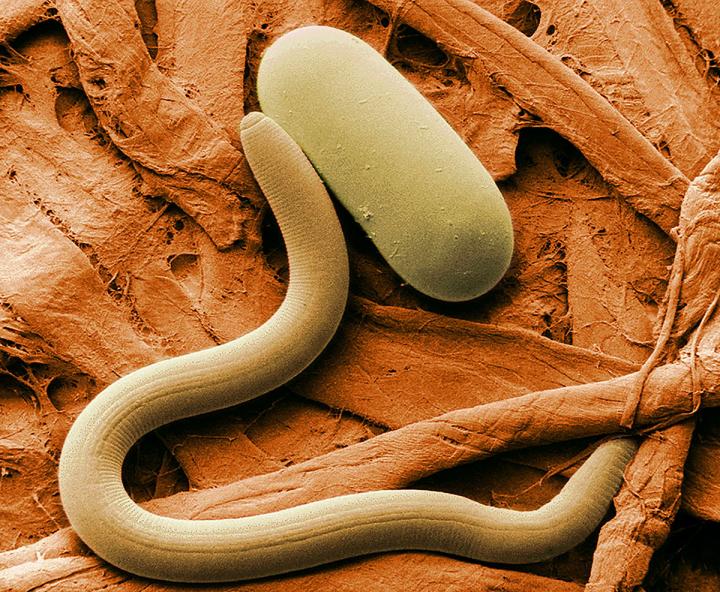
Credit: Photo by USDA-ARS
CHAMPAIGN, Ill. — The soybean cyst nematode sucks the nutrients out of soybean roots, causing more than $1 billion in soybean yield losses in the U.S. each year. A new study finds that one type of fungi can cut the nematodes’ reproductive success by more than half.
The researchers report their findings in the journal Plant Disease.
“Soybean cyst nematodes survive in the soil as eggs in cysts,” said Glen Hartman, a researcher for the U.S. Department of Agriculture’s Agricultural Research Service in the department of crop sciences at the University of Illinois at Urbana-Champaign. Hartman led the new research with graduate student Michelle Pawlowski. “The eggs hatch at the start of the growing season, and the juveniles penetrate root tissue and migrate into the plant’s vascular system. The females find a feeding site and stay there for the rest of their lives. They take nutrients away from the soybean plant, which reduces plant productivity.”
Previous studies have found that fungi in the soil that form mutually beneficial relationships with soybeans and other plants can influence the success of plant parasitic nematodes, including SCN. But the effectiveness of using these “arbuscular mycorrhizal fungi” to thwart plant parasitic fungi varies from study to study, making growers reluctant to embrace this as a method of control, Hartman said.
“In this study, we focused on five different species of arbuscular mycorrhizal fungi to see if they differed in their ability to protect soybeans against SCN,” Pawlowski said.
The researchers inoculated young soybean plants with fungi and SCN in greenhouse experiments. By the end of the experiment, all five fungal species had reduced the number of SCN cysts in the roots. The lowest number of cysts occurred on plants inoculated with the fungus Funneliformis mosseae. These averaged 10 cysts per plant. Soybean plants that were not inoculated with fungi accumulated 75 or more cysts per plant.
“Each cyst may contain hundreds of nematode eggs,” Hartman said.
Further experiments with F. mosseae revealed that exposure to the fungus reduced the number of juvenile nematodes on the plants by more than half.
“We found that as early as seven days after inoculation, roots that were inoculated with F. mosseae were colonized with significantly fewer nematode juveniles,” Pawlowski said.
“To see if this interaction and suppression might occur even earlier, we incubated SCN eggs in sterile water alone, with fungal spores or with exudates of the fungal spores. These exudates are microbes and molecules secreted by the spores,” she said.
This experiment revealed that the fungal spores and their exudates undermine nematode egg hatching, she said.
“If we can find out what function or compound from the fungi is suppressing egg hatching, that could potentially be a useful nematicide,” Pawlowski said.
###
The USDA-ARS supports this research.
Editor’s notes:
To reach Glen Hartman, email [email protected] or [email protected].
To reach Michelle Pawlowski, email: [email protected].
The paper “Impact of arbuscular mycorrhizal species on Heterodera glycines” is available online and from the U. of I. News Bureau.
Media Contact
Diana Yates
[email protected]
Original Source
https:/
Related Journal Article
http://dx.




